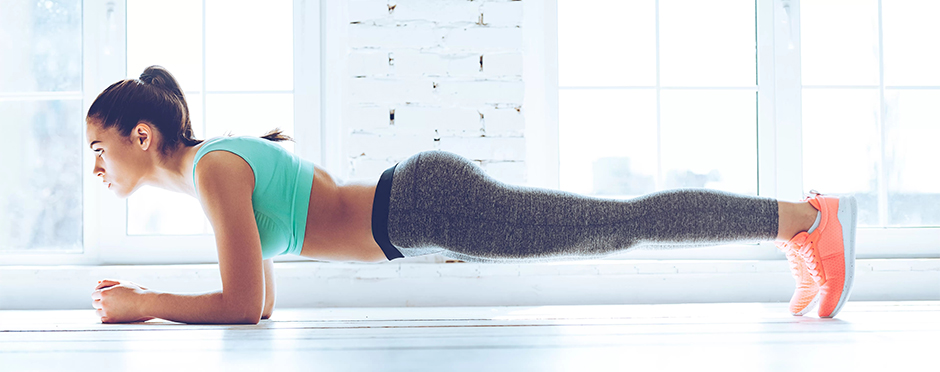
Tips from a PT: How to Perfect the Plank
Leave a CommentPlanks are a great way to increase strength and stability in your core musculature. Although there is debate about what muscles are included in the “core,” most people can agree that it at least includes the abdominals. I’ve always believed that the core consists of every muscle in the torso, as they all contribute to some degree to movements that target the “core.” The muscles are fluid in their definition based upon what movement is being performed. The traditional plank is the most known plank exercise, though there are countless other varieties to use depending on your goals.
This “Tips From a PT” post aims to perfect your plank, specifically the traditional plank. The following is a step-by-step instruction for perfecting your plank, which draws inspiration from Pavel Tsatsouline, a former Russian Special Forces trainer.
Perfecting the Plank
- Assume the standard plank position on your elbows and toes. Your elbows should be roughly shoulder width and directly under your shoulders or slightly in front of your shoulders when looking at yourself from a side view. Your feet should be hip-width apart and in a dorsiflexed position (your ankles pulled up towards your head). You should feel some tension in the arch of your foot.
- Once in the above position, you will posteriorly tilt your pelvis (tuck your tail) to round your lower back to take away the tension from these structures. It is okay to move your hips a little bit further away from the ground to accomplish this movement. By now, you should at least feel your abdominal muscles start to tense up and work harder than a standard plank. Buckle up because we’re not done yet.
- After getting your pelvis and abdominals into position, you will aggressively contract your quads and glutes to straighten your legs. These are isometric contractions, meaning they should not create movement; you are just flexing them as hard as you can. After these contractions have started, pull your belly button into your spine to draw your stomach in.
- The final piece of the puzzle is an isometric crunch, whereby you are creating much more tension in your abdominal muscles. You should feel like you are pulling your elbows towards your knees and your knees towards your elbows, but again this is an isometric contraction and should not create any movement with this cue.
- Once all the steps have been completed, you should hold this final position for 5-15 seconds in the beginning, depending on your baseline fitness level. I typically prescribe 5-10 of these planks initially and progress in total repetitions and time duration over weeks. After this initial time doing these planks, do not be surprised if you have some serious abdominal DOMS (Delayed-Onset Muscle Soreness) for a couple of days. This is typical with new exercise and not something to be overly concerned about, though it does make sneezing more fun!
This is a new and challenging plank to perform, but there is also data to back up the increased tension that you feel1. This will breathe new life into your planks, and you will notice an increase in strength in other exercises. If you need further help with your exercises or experiencing any aches and pains, reach out to your local Athletico today and schedule a Free Assessment. Free Assessments are available in-clinic and virtually through our Telehealth platform.
The Athletico blog is an educational resource written by Athletico employees. Athletico bloggers are licensed professionals who abide by the code of ethics outlined by their respective professional associations. The content published in blog posts represents the opinion of the individual author based on their expertise and experience. The content provided in this blog is for informational purposes only, does not constitute medical advice and should not be relied on for making personal health decisions.
References:
1. Schoenfeld BJ, Contreras B, Tiryaki-Sonmez G, Willardson JM, Fontana F. An electromyographic comparison of a modified version of the plank with a long lever and posterior tilt versus the traditional plank exercise. Sports Biomech. 2014;13(3):296-306. doi:10.1080/14763141.2014.942355
